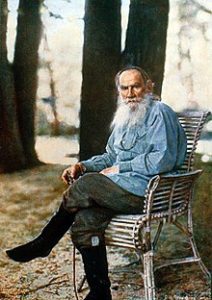Biography of Leo Tolstoy

Early Life and Career of Leo Tolstoy

The Period Of The Great Novels (1863–77)
Tolstoy was happily married to his wife and lived with his family at Yasnaya Polyana when he reached the height of his creative powers. He devoted the remaining years of the 1860s to writing War and Peace. Then, after a brief interlude, Tolstoy wrote his other great novel, Anna Karenina.
Conversion and Religious Beliefs
Upon completing Anna Karenina, Tolstoy fell into a profound state of existential despair, which he describes in his Ispoved (1884; My Confession). When all activity seemed utterly pointless in the face of death, Tolstoy turned to religion.
In the early 1880s he wrote three closely related works, Issledovaniye dogmaticheskogo bogosloviya (written 1880; An Examination of Dogmatic Theology), Soyedineniye i perevod chetyrokh yevangeliy(written 1881; Union and Translation of the Four Gospels), and V chyom moya vera? (written 1884; What I Believe); he later added Tsarstvo bozhiye vnutri vas (1893; The Kingdom of God Is Within You) and many other essays and tracts.
Last Years of Tolstoy
Tolstoy’s daughter, Aleksandra was the only one close to him, whom he made his heir. The rest of his family remained aloof from or hostile to his teachings. In 1910, Tolstoy escaped from Yasnaya Polyana with Aleksandra and his doctor. But unfortunately, within a few days, he contracted pneumonia and died of heart failure at the railroad station of Astapovo.